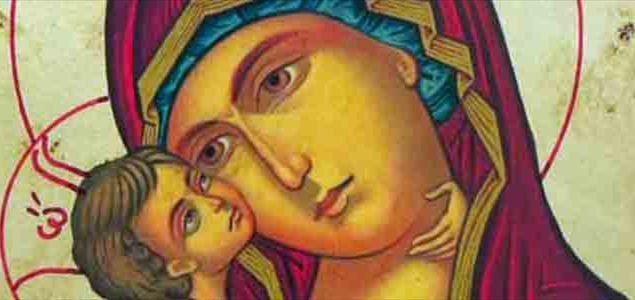
On January 1st, the civil New Year, is celebrated solemnity of Mary Most Holy Mother of God. This dogma (truth of faith) was solemnly proclaimed in the Council of Ephesus in the year 431, where the human and divine nature of the one person of the Word in Jesus Christ was affirmed and therefore the divine motherhood of Mary was also affirmed. With this feast the conclusion of the Octave of Christmas is indirectly celebrated.
What is the historical origin of this anniversary?
The solemnity of Maria SS. Mother of God is the first Marian feast to appear in the Western Church. Originally the festival replaced the pagan use of “strenae” (strennae), whose rites contrasted with the sanctity of Christian celebrations. The “Christmas Sanctae Mariae” began to be celebrated in Rome around the 6th century, probably in conjunction with the dedication of one of the first Marian churches in Rome: S. Maria Antiqua at the Roman Forum, south of the Temple of the Castors.
The liturgy was linked to that of Christmas and January 1st was called “in octava Domini”: in memory of the rite performed eight days after the birth of Jesus, the gospel of circumcision was proclaimed, which also gave its name to the celebration that inaugurated the new year.
Why was October 11th celebrated in the past?
In the Roman rite the solemnity is celebrated on January 1st of each year. In the extra-ordinary form of the Roman rite the second class feast is celebrated on 11 October. The origin of the date, apparently strange in itself as it is far from Christmas, has historical reasons: on 11 October 431, during the Council of Ephesus, the truth of faith of the “divine motherhood of Mary” was defined; so in 1931, marking the 15th centenary of the Council, Pope Pius XI established the liturgical feast.
In the Ambrosian rite, the Sunday of the Incarnation is the sixth and last Sunday of Advent, the one immediately preceding Christmas.
In Syriac and Byzantine ritual traditions, the anniversary is celebrated on December 26th.
In the Coptic rite, the anniversary is celebrated on January 16th.
What is the theological and spiritual meaning of this holiday?
Nestorius had dared to declare: “Does God therefore have a mother? Then let us not condemn Greek mythology, which attributes a mother to the gods”; Saint Cyril of Alexandria, however, had replied: “It will be said: the Virgin is the mother of divinity? To which we reply: the living, subsisting Word was generated from the very substance of God the Father, has existed from all eternity… But over time he became flesh, therefore it can be said that he was born of a woman.” Jesus, Son of God, was born of Mary. It is from this sublime and exclusive prerogative that all the titles of honor attributed to her derive from the Virgin, even if we can make a distinction between Mary’s personal holiness and her divine motherhood suggested by Christ himself: “A woman raised her voice from the crowd and said: ‘Blessed is the womb that bore you and the breasts from which you took milk!”. But he said: “Blessed rather are those who hear the word of God and keep it!”” (Lk 11,27f).
In reality, “Mary, daughter of Adam, consenting to the divine word, became the mother of Jesus and, embracing with all her heart and without any burden of sin the salvific will of God, she totally consecrated herself as the Handmaid of the Lord to the person and to the work of his Son, serving the mystery of redemption under him and with him, with the grace of almighty God” (Lumen Gentium56).
What else is celebrated on this day?
Since January 1, 1968, the Catholic Church also celebrates on this day World Peace Day. The purpose of the Day is to dedicate New Year’s Day to reflection and prayer for peace.
The anniversary was established by Pope Paul VI with a message dated 8 December 1967 and was celebrated for the first time on 1 January 1968. Since that year the Pontiff of the Catholic Church has sent a message to the leaders of nations and to all men of good will which invites reflection on the theme of peace.







